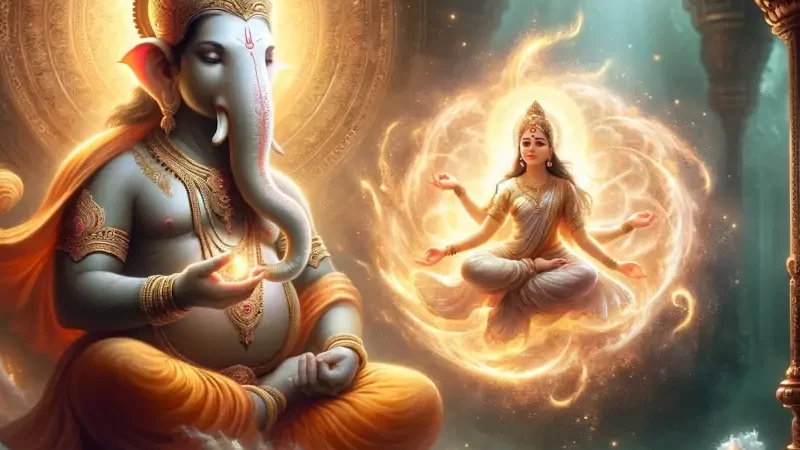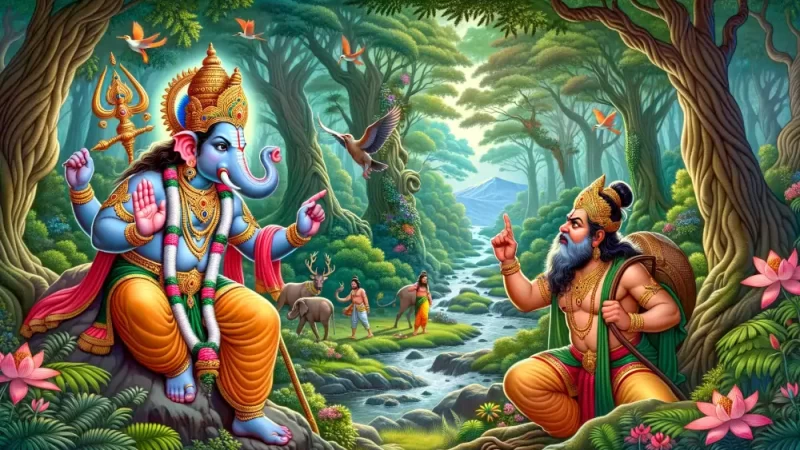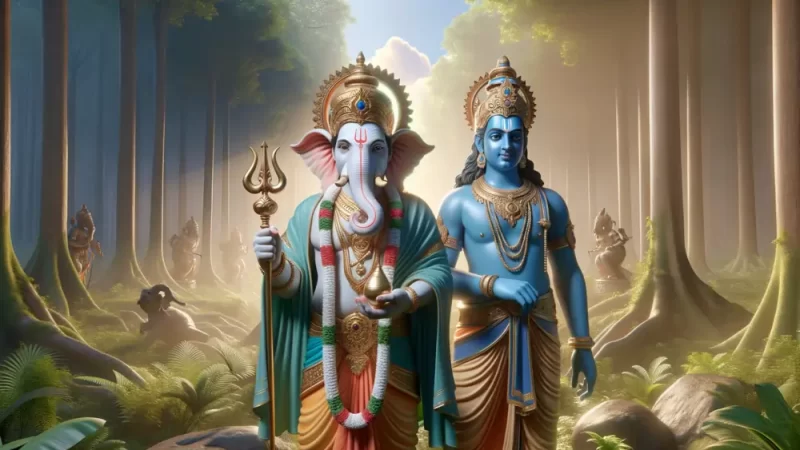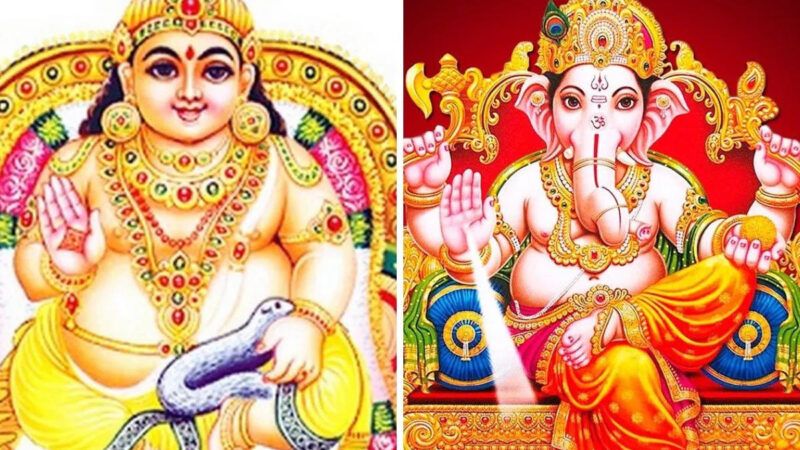Ashokasundari: The Lesser-Known Sister of Lord Ganesha
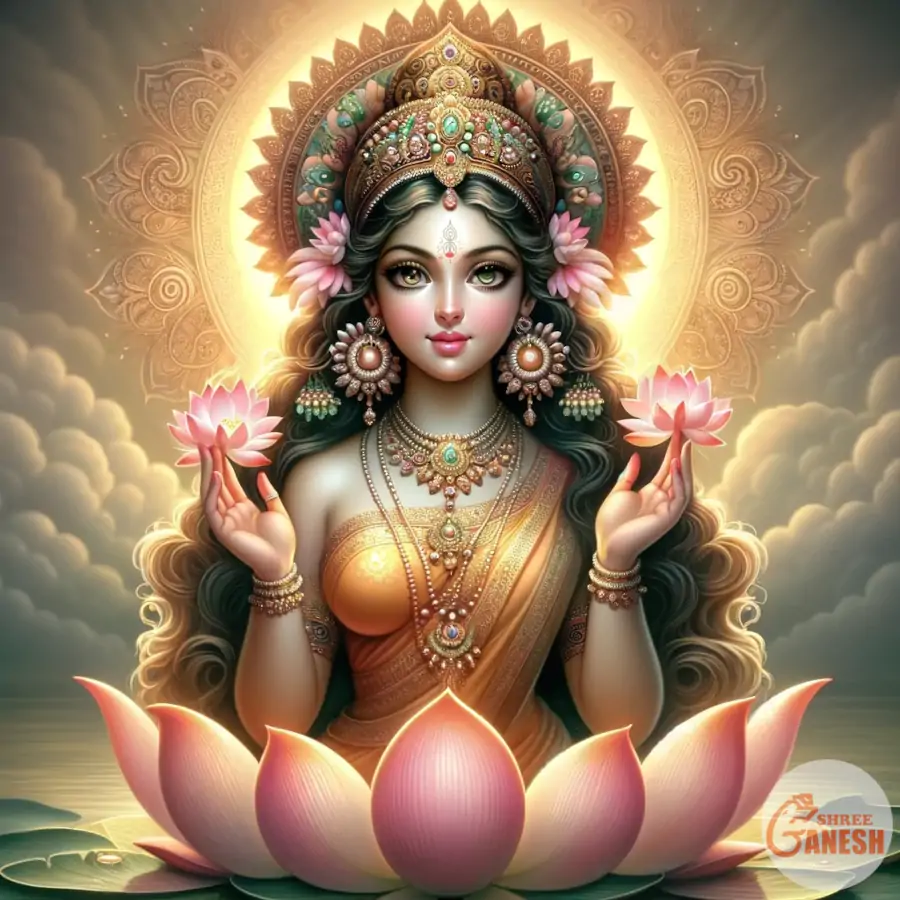
In the realm of Hindu mythology, where gods and goddesses abound, there are tales that are often overlooked, stories that hide in the shadows of more prominent deities. One such story is that of Ashokasundari, the sister of Lord Ganesha—a tale both mysterious and enchanting, with roots that delve deep into the mythological tapestry.
The Divine Lineage
Ashokasundari’s story begins with her illustrious parentage. She is considered to be the daughter of none other than Lord Shiva and Goddess Parvati, two of the most revered deities in Hinduism. Born in the celestial abode of Kailash Parvat, her existence is shrouded in mystique.
Goddess Parvati, known for her grace and beauty, often found herself longing for companionship during Lord Shiva’s prolonged absences. Shiva, the ascetic deity who frequently left Kailash Parvat to engage in battles against demons and meditate in seclusion, was not always by her side. In her solitude, Parvati yearned for a companion who would fill the void in her heart.
The Wish-Fulfilling Tree
It was during one of these moments of solitude that Parvati and Shiva came upon a wish-fulfilling tree known as the Kalpavriksha. This magnificent tree, said to possess the power to grant any desire, cast its enchanting aura upon the divine couple. Parvati, with a heart filled with longing, made a fervent wish to the Kalpavriksha—to bless her with a daughter who would bring joy and companionship into her life.
In response to Parvati’s earnest plea, the divine tree granted her wish. Thus, Ashokasundari came into existence, a manifestation of the divine union of Lord Shiva and Goddess Parvati.
The Meaning Behind the Name
The name “Ashokasundari” carries profound significance, as is often the case with names in Hindu mythology. “Ashoka” translates to “without sorrow,” and it was bestowed upon her because she was the embodiment of joy and happiness, erasing the sorrow that had once plagued Parvati’s heart. “Sundari” means beautiful, a reflection of the extraordinary beauty that graced the divine girl.
Ashokasundari’s radiant beauty was said to be unparalleled, a testament to the divine grace with which she was born. Her presence brought not only happiness to her parents but also a sense of completeness to their celestial family.
A Mysterious Figure in Mythology
Curiously, despite her divine lineage and the significance of her birth, Ashokasundari remains a relatively mysterious figure in Hindu mythology. The scriptures offer scant information about her, leaving her story veiled in obscurity. However, she is mentioned in the Padma Purana, one of the ancient texts that narrate her tale.
One of the few events in which Ashokasundari plays a role is the tragic incident of Lord Ganesha’s beheading. When Ganesha was beheaded by Lord Shiva, Ashokasundari was present, witnessing the harrowing turn of events. Frightened by her father’s actions, she sought refuge behind a sack of salt, trembling with fear.
As the divine drama unfolded, and Lord Ganesha’s head was severed, Goddess Parvati was consumed by anger and grief. In her rage, she not only demanded the restoration of her son’s life but also cursed Ashokasundari. The curse cast upon her was unique and unusual—she was to become a part of the salt itself.
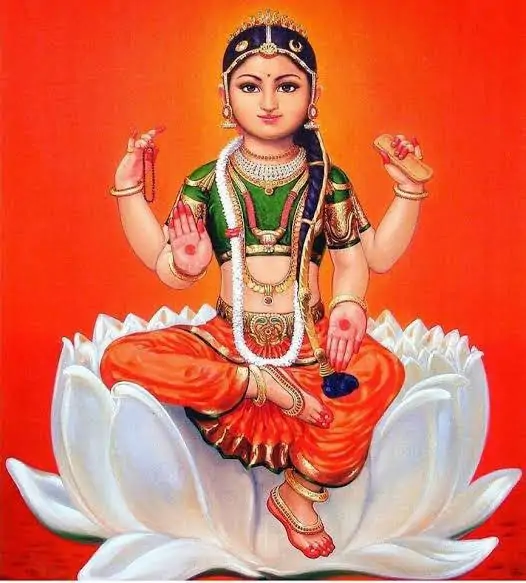
The Salt Connection
The association of Ashokasundari with salt carries a symbolic weight that transcends the ordinary. In Indian cuisine, salt is considered an essential ingredient, one that enhances the flavors of every dish. Without salt, food is often perceived as tasteless and incomplete.
The tale of Ashokasundari’s temporary transformation into a part of the salt serves as a reminder of her pivotal role in the family of Lord Shiva and Goddess Parvati. Just as salt is indispensable in elevating the taste of food, her presence brought an indispensable sense of joy and completeness to her divine parents’ lives.
Once Lord Ganesha’s head was miraculously restored by Lord Shiva, and the family’s anguish was assuaged, they lovingly restored life in their daughter. Ashokasundari returned to her divine form, her beauty and grace unscathed, and she was once again a source of boundless joy and happiness.
The Enigmatic Existence
Despite her relatively limited presence in the scriptures, Ashokasundari’s story continues to captivate those who delve into the depths of Hindu mythology. Her enigmatic existence adds an air of intrigue to the pantheon of divine beings, reminding us that even in the most mystical of tales, there are hidden gems waiting to be discovered.
Ashokasundari’s tale is a testament to the complexity and richness of Hindu mythology, where even lesser-known figures carry profound meaning and symbolism. Her name, her birth, and her brief encounter with adversity—all of these elements combine to create a narrative that invites contemplation and reflection.
In a world where the stories of gods and goddesses abound, Ashokasundari stands as a reminder that every character, no matter how briefly mentioned, has a role to play in the grand tapestry of mythology. Her story, though shrouded in mystery, is a testament to the enduring power of joy, companionship, and the love that binds a divine family together.
While the world may not be as familiar with Ashokasundari as it is with her illustrious brother, Lord Ganesha, her presence in the annals of Hindu mythology is a reminder that every deity, no matter how hidden, carries a unique significance and contributes to the celestial harmony of the divine realm.


